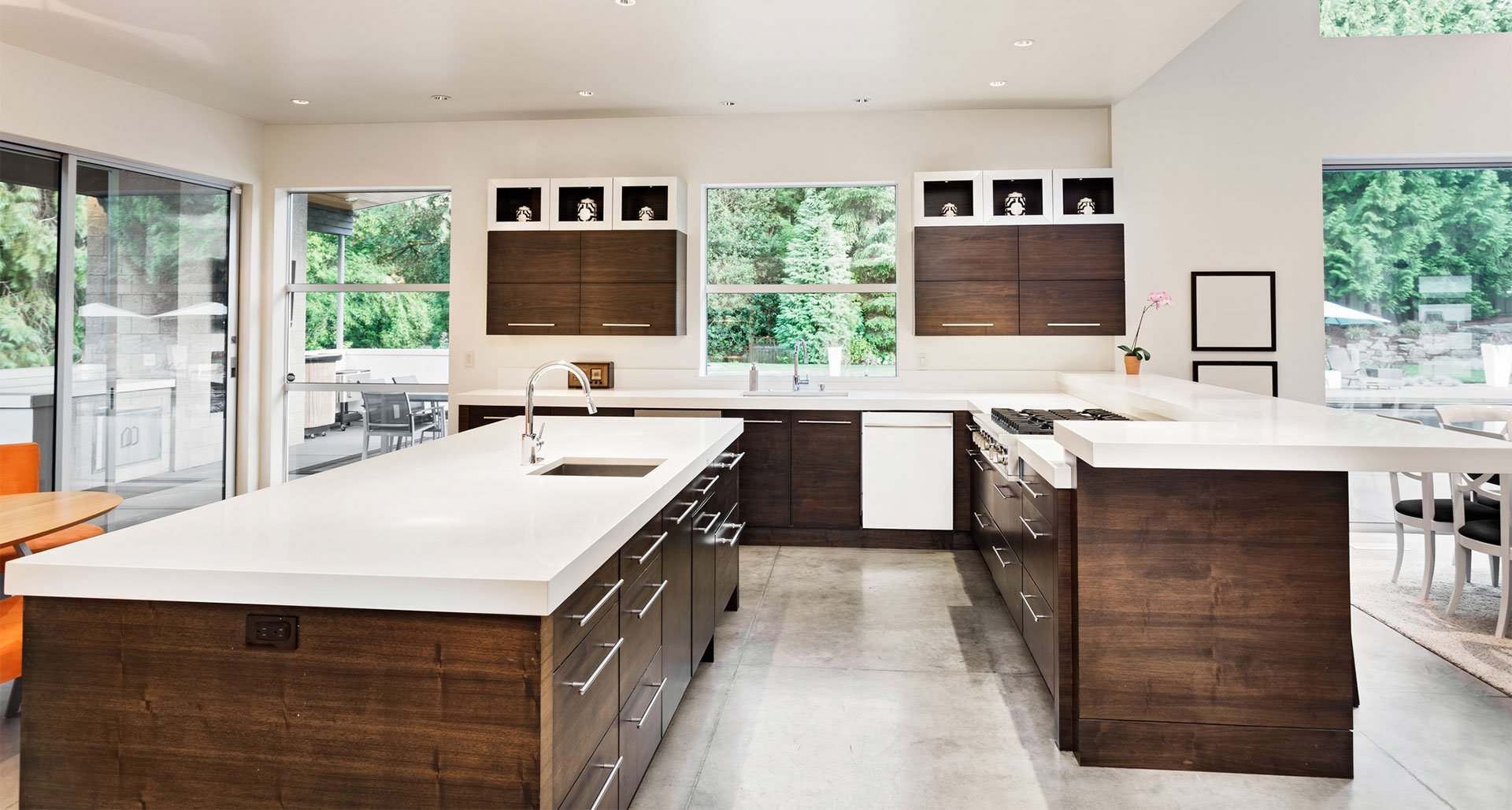Granite vs. Quartz Countertops Guide
Quartz Countertops

Granite Countertops

PROS
- Non-porous
- Uniform in color and texture
- More flexible
- Seams will be less obvious
- Sealing and resealing is not necessary
- More stain resistant
- More durable
- Adds to resale value
CONS
- More expensive
- Heavier
- Slabs are not as wide
- Must be repaired professionally
- Fades in sunlight
- Not for outdoor use
PROS
- Natural stone
- Varied in color and texture
- Less expensive
- Available in wider slabs
- Small chips can be repaired at home
- Holds its color in direct sunlight and heat
- Adds to resale value
- Less expensive
CONS
- Samples do not represent actual colors
- Needs to be resealed periodically
- More brittle
- Seams will show
- Somewhat porous
Solid Stone vs. Engineered Stone
Granite counters are mined from pure stone. The stone is sawed into slabs or made into tiles and then polished for installation. Quartz countertops are manufactured from crushed quartz that is mixed with pigment for coloration and resin as a binder. The quartz content is typically 92% to 94%.
If you want authentic stone countertops, then granite is your only choice her.
The Appearance of Granite and Quartz
Both types have their strong point. Granite shows slight, natural variations in the hue of the stone. Colors ranges from earth tones to blues, greens and roses. The coloration of quartz is more consistent, and it is available in a wider array of colors since they are produced with pigments added to the quartz.
Which one is “better?” Beauty is in the eye of the beholder here. They are both very good looking. As you browse your options, you’ll get a feel for which one you prefer.
Installation
A professional is required for the installation of granite or quartz. Granite, for example, must be carefully fabricated from the chosen slab to fit exactly and show its best features. It is more brittle than quartz, and a professional will guarantee the work being done. Quartz is heavier than granite. Because of this, a professional installer should inspect and perhaps prepare the cabinets where the quartz will rest.
Despite being heavier than granite, the resins and polymers in quartz make it a little more flexible, meaning it is somewhat easier to work with in the installation process. Neither installation can be classified as easy, however, since installers are contending with large, heavy slabs and cutting them carefully to fit an exact space.




